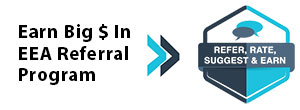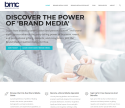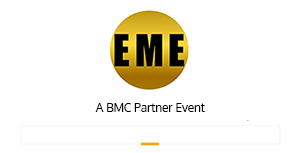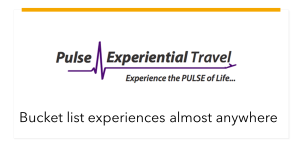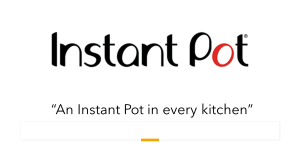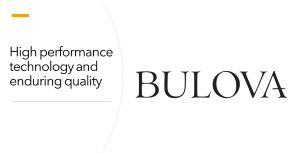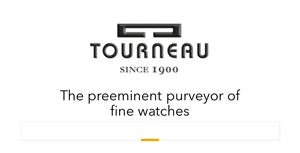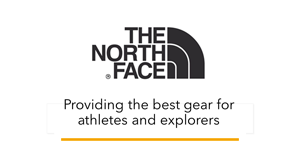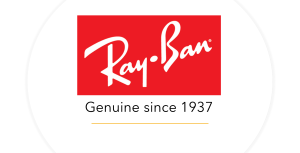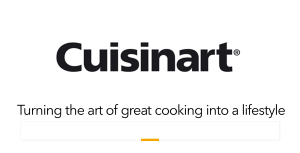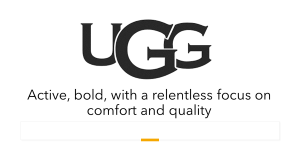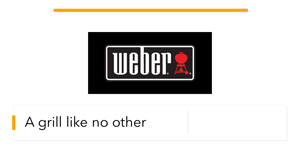Mixed Response in IRR Industry to Rise of Human Capital Management
Conversations with senior management at a wide range of incentive and recognition companies find general agreement that the unprecedented focus on human capital will only continue to grow and differ only on how their organizations will respond. Over a dozen calls found only one company ready to go all in on developing a full-service human capital management business with its own plans to publish a human capital report and to help clients with publishing them as well. Most expect to benefit from the new emphasis on people by remaining in their own lanes while addressing client demands for more data and program design effectiveness, expanded but related services, with no other announced plans to publish a human capital report for their own companies.
- Rob Danna, ITA Group
- Jacque Busby, Luxe Incentives
- Lincoln Smith, HMI Performance Incentives
- Kylie Green, Reward Gateway
- Mike May, Brightspot
- Tom Short, Kudos
- Dr. Bob Randall, Transcend Engagement
- Dr. Paul White, Appreciation at Work
 Every executive in the IRR (Incentive, Rewards, and Recognition) field interviewed for this article agrees that the era of human capital management has arrived and that it will create opportunities for the marketplace. The only area of disagreement among those interviewed is related to where each organization seeks to fit in the value chain.
Every executive in the IRR (Incentive, Rewards, and Recognition) field interviewed for this article agrees that the era of human capital management has arrived and that it will create opportunities for the marketplace. The only area of disagreement among those interviewed is related to where each organization seeks to fit in the value chain.
A few of those interviewed have direct plans to fill what they see is a void in the market to provide full-service engagement-agency like services, starting with helping organizations determine their brand purpose at the highest level; conducting a gap analysis to determine the organization’s opportunities and challenges related to stakeholder engagement; developing and implementing a comprehensive human capital management and reporting plan; and even helping with the management of internal and external human capital reporting.
Most of those interviewed intend to stay focused in their current line of business with the focus on providing as much as help as customers will allow on program design and responding to what all agree is a growing demand for analytics and insights. ITA Group was the only respondent planning to publish a public human capital report.
Says one incentive company president who preferred not to be quoted, “Everyone in the IRR field knows that the human capital management movement has arrived. Many just don’t know what to do about it.”
It is clear that one byproduct of the human capital movement will be continued mergers, acquisitions, and investments as companies seek to expand their range of services and value propositions.
Rob Danna, ITA Group
“We’re all in,” says Rob Danna, Senior Vice President of Des Moines-based and employee-owned ITA Group, a 60-year-old company that is among the top five world’s largest IRR firms. ““When you have organizations such as the Conference Board focusing on the subject and so much interest coming from investors, it has clearly become a C-suite issue,” he recently told ESM. See ESM: ITA Group’s Rob Danna: We Intend to be the Leader in Human Capital.
“Our advantage is our ability to take tactical solutions such as recognition, incentives, and meetings, and apply them to help organizations achieve their specific business goals, and that starts with taking the voice of employees and pairing it with good organizational data and strategy to design a tailored solution. We are not the company that brings the same tool to every challenge. We go in and ask, ‘what issues do you have? Then we look into the toolbox to see what makes sense. Today, companies need a multi-platform approach to get their message across; it involves much more than traditional recognition and incentives, although they are important too.” This focus, he says, has his company on the hunt for strategic acquisitions.
He says his company already has an internal human capital report and plans to publish a public human capital report following the outline of the ISO 30414 framework used by the Enterprise Engagement Alliance in the creation of human capital reports. (For an example, see Jetruby.com. )
Jacque Busby, Luxe Incentives
For Jacque Busby, Founder, Luxe Incentives, a 39-year-old boutique incentive company based in Milwaukee (See RRN: Luxe Incentives: The Lessons of Selling ROI Before Its Time). “Yes, there is no doubt companies are focusing much more on their people in terms of an investment, instead of a cost, and there is more interest in data on the impact of their programs. While in the past companies focused more on measuring whether people liked their programs, there is growing interest on the actual impact the program had on the bottom line or other goals.”
Does she believe the IRR industry can benefit from this trend? “Absolutely, so much so we have created a new division to address it. I cannot speak for what the rest of the industry will do, but any company not seeking to increase their value to their clients is at risk of losing their business to companies like mine that will.”
HMI Performance Incentives
Says Lincoln Smith, Chief Strategy Officer for Norwood, MA-based HMI Performance Incentives, in a recent article (See: HMI Performance Exec: It’s Time for People Science in Channel and Sales Engagement.) “While the pandemic accounts for a significant increase in demand for employee engagement, Smith says the same forces apply in the channel and sales arena as well. “Companies today are dealing with unprecedented market share battles and changes in sales personnel. The ability to more precisely engage key channel or in-house salespeople and their support teams on a one-to-one basis can provide the competitive edge, and that can only be accomplished if you carefully identify what’s going to move the needle and with whom. Our challenge is to educate the C-suite on the unique types of one-on-one engagement services companies like ours can provide that are not available from the world’s better-known marketing or advertising agencies.”
He continues, “While the pandemic accounts for a significant increase in demand for employee engagement,” Smith says the same forces apply in the channel and sales arena as well. “Companies today are dealing with unprecedented market share battles and changes in sales personnel. The ability to more precisely engage key channel or in-house salespeople and their support teams on a one-to-one basis can provide the competitive edge, and that can only be accomplished if you carefully identify what’s going to move the needle and with whom. Our challenge is to educate the C-suite on the unique types of one-on-one engagement services companies like ours can provide that are not available from the world’s better-known marketing or advertising agencies.”
His company is focused on precisely how to package what he believes are critical contributions to the bottom line that can give companies like HMI the level of stature the advertising field enjoyed in the days of “Mad Men.” He adds, “We address the two biggest priorities for any CEO today: people and profit.” His company has recently joined the Enterprise Engagement Alliance as part of his organization’s efforts to maximize the development and sharing of expertise in channel and sales performance improvement..
Kylie Green, Reward Gateway
More typical of the responsies is the perspective of Kylie Green, Senior Vice President of Sales for Reward Gateway, one of the world’s largest recognition companies. “Yes, we see more emphasis on recognition, employee experience, managing and measuring great experiences to attract and retain talent. We conducted a survey of over 3,000 organizations and employees in the US, UK, and Australia, and all three markets see a greater focus by the executive team to attract and retain core talent.”
She sees a greater emphasis on benefit programs that provide opportunities for employees to feel appreciated and valued; more two-way communications and recognition; more flexibility in rewards; greater use of data analytics and the need to measure employee engagement, willingness to refer, and encourage employee voice. She says her company has seen more “executive sponsorship” of programs than ever before and intends to continue its focus on broadening its range of employee engagement services, demonstrated by its recent purchase of the MoveSpring employee wellness platform. See RRN: Reward Gateway Acquires MoveSpring Employee Wellbeing Platform.
Mike May, Brightspot Incentives
Mike May, Majority Owner, Brightspot Incentives & Events, a Dallas-based motivational events and incentive company, agrees that human capital has risen to the top of the corporate agenda but that it will take time to trickle down through the ranks of management to affect the more tactical businesses such as incentives and motivational events. He believes that human capital reporting is inevitable, but “this really should be promoted in the positive sense, as a way to enhance an organization’s brand, with not so much focus on ‘you have to do this or else.’”
As to the role IRR companies such as his can play with clients, “We need to be consultants sharing advice, because if we are not, we become an administrator. We need to push back when appropriate. Clients want to have a good healthy exchange.” How high can organizations like his go in the value chain of human capital management? “Sadly, I don’t think our industry can seize upon this advisory opportunity. While many large and medium incentive agencies have the expertise, I believe that companies will perceive other consulting firms such as McKinsey, PwC, Accenture as the logical choices because the incentive industry is so tactical- and logistics focused. Changing internal perceptions is doable, but changing external perceptions is much tougher, especially with our limited advertising budgets.”
Tom Short, Kudos
Kudos, a leading Calgary-based international recognition firm, is another company that intends to focus on enhancing its current approach to the recognition field. “We have seen a shift in thinking and actions with many organizations globally, large and small, to increase their focus on employee engagement, as evidenced by new roles that focus entirely on increasing engagement, inclusion, and belonging. We are seeing more titles such as the Director, People and Engagement to Diversity, Equity, & Inclusion Manager. The C-Suite is driving these changes to address the talent competition and the new reporting requirements around ESG (Environmental, Social Governance) reporting.”
He continues, “When you lose good people and or can’t hire the talent you need, companies quickly realize that good companies and or products alone will not sustain the business without great people. All organizations are people driven. Like the old saying, ‘take care of your people, they will take of your clients, and that will take care of your shareholders.’ If you put either of the other two first, you risk limiting your potential.”
Short sees “A new sense of urgency sweeping over many organizations around one question, ‘how do I compete in this new normal?’ It comes down to building people-centric businesses. Organizations of all types need to know their Why (purpose) and focus on their core values to give people (employees, clients, and investors) a reason to want to work with them, believe in the business, and invest in them. Alignment in purpose and values is critical to unlocking the potential of people and organizations."
What are Kudos’ plans to address the opportunity? “At Kudos, we practice what we preach. We are a core values-driven organization, we put our people first, and we leverage our own system to reinforce our purpose, communicate our values and recognize our team. To achieve great success, you need to recognize the small positive behaviors, contributions, and efforts daily if you want to achieve significant results year over year.”
Dr. Bob Randall, Transcend Engagement
Dr. Bob Randall, CEO/Lead Consultant, Transcend Engagement, LLC, a Minneapolis-based employee engagement firm, observes: “There is more activity and continued momentum for human capital reporting. As we know, these changes do not happen overnight. We know employee engagement is a leading indicator of financial performance, so we are encouraged to see more reporting on this in annual reports. That said, not all companies have enthusiastically embraced this approach, but more are coming on board every day.”
In his opinion, “the change toward human capital reporting is happening slowly because our entire public company system is set up for a focus on short term results. Quarterly reporting creates a culture akin to the TV show “Survivor,” where every CEO/CFO is put under the spotlight for financial performance every three months. Employee engagement is a leading indicator of longer-term performance. It seems board members are increasingly realizing this, especially with the worker shortage limiting results in the here-and-now. We continue to see good activity in the employee engagement space – companies want real-time metrics so they know at a high-level how the company is meeting (or not meeting) the needs of employees. They also want predictive metrics and are ready to jump when they see a recognition program or communication program having a positive effect on engagement.”
Dr. Paul White, Appreciation at Work
For the perspective of a company that focus on the broader issue of appreciation at work, ESM reached out to Dr. Paul White, Founder of the advisory firm named after his book, Appreciation at Work. Does he believe that the era of human capital management, measurement, and reporting has arrived? “Arrived? no. In the process of arriving (like a slow-moving general consciousness), yes.”
Is the business world finally recognizing that if people are our No. 1 asset, they must be managed with a strategic, systematic, and measurable approach? “Many are – especially those who need people to directly provide services or production. But, unfortunately, many still aren’t – especially those in the fintech world; they seem to be stuck on the concept of “employee = production unit”. It is encouraging, however, to read the report by the Conference Board human capital working group – that they are seeing a shift among C-suite members to more seriously address the need to incorporate human capital initiatives into their overall strategic planning.”
Click here to get RRN news delivered each week.
Education, Certifications, and Information to Activate
Brand Media and Enterprise Engagement
A complete learning, certification, and information program and a course syllabus for educators.
Resources: The Brand Media Coalition, the only guide to the story-telling power of brands and where to source them for business, event, promotional gifting, and rewards and recognition. Enterprise Engagement Solution Provider Directory. The only directory of engagement solution providers covering all types of agencies and tactics as well as insights on how to select them.
Communities: The Enterprise Engagement Alliance and Advocate and the Brand Media Coalition free resource centers offering access to the latest research, news, and case studies; discounts, promotions, referrals, and commissions, when appropriate to third-party solution providers from participating coalition solution provider members.
Training and Certification
Enterprise Engagement Alliance Education: Certified Engagement Practitioner; Advanced Engaged Practitioner, and Certified Engagement Solution Provider learning and certification programs on how to implement Stakeholder Capitalism principles at the tactical level.
International Center for Enterprise Engagement: The only training and certification program for ISO 30414 human capital reporting and ISO 10018 quality people management certification.
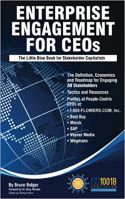
The EEA offers a complimentary course syllabus for educators.
In Print:
This is the definitive implementation guide to Stakeholder Capitalism, written specifically to provide CEOs and their leadership teams a concise overview of the framework, economics, and implementation process of a CEO-led strategic and systematic approach to achieving success through people. (123 pages, $15.99)
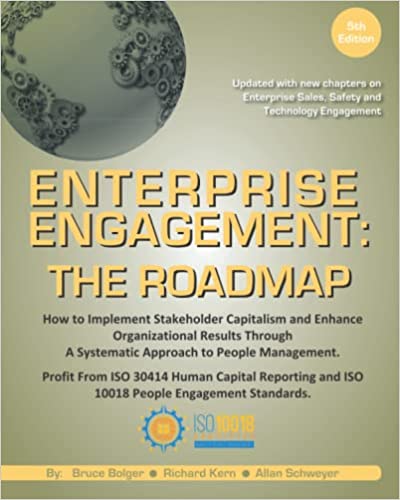
The first and most comprehensive book on Enterprise Engagement and the new ISO 9001 and ISO 10018 quality people management standards. Includes 36 chapters detailing how to better integrate and align engagement efforts across the enterprise. (312 pages, $36.)
Online:
10-minute short course: click here for a 10-minute introduction to Enterprise Engagement and ISO standards from the Coggno.com learning platform.
Services:
• The Engagement Agency at EngagementAgency.net, offering: complete support services for employers, solution providers, and technology firms seeking to profit from formal engagement practices for themselves or their clients, including Brand and Capability audits for solution providers to make sure their products and services are up to date.
• C-Suite Advisory Service—Education of boards, investors, and C-suite executives on the economics, framework, and implementation processes of Enterprise Engagement.
• Speakers Bureau—Select the right speaker on any aspect of engagement for your next event.
• Mergers and Acquisitions. The Engagement Agency’s Mergers and Acquisition group is aware of multiple companies seeking to purchase firms in the engagement field. Contact Michael Mazer in confidence if your company is potentially for sale at 303-320-3777.
Enterprise Engagement Benchmark Tools: The Enterprise Engagement Alliance offers three tools to help organizations profit from Engagement. Click here to access the tools.
• ROI of Engagement Calculator. Use this tool to determine the potential return-on-investment of an engagement strategy.
• EE Benchmark Indicator. Confidentially benchmark your organization’s Enterprise Engagement practices against organizations and best practices.
• Compare Your Company’s Level of Engagement. Quickly compare your organization’s level of engagement to those of others based on the same criteria as the EEA’s Engaged Company Stock Index.
• Gauge Your Personal Level of Engagement. This survey, donated by Horsepower, enables individuals to gauge their own personal levels of engagement.
For more information, contact Bruce Bolger at Bolger@TheEEA.org, 914-591-7600, ext. 230.


